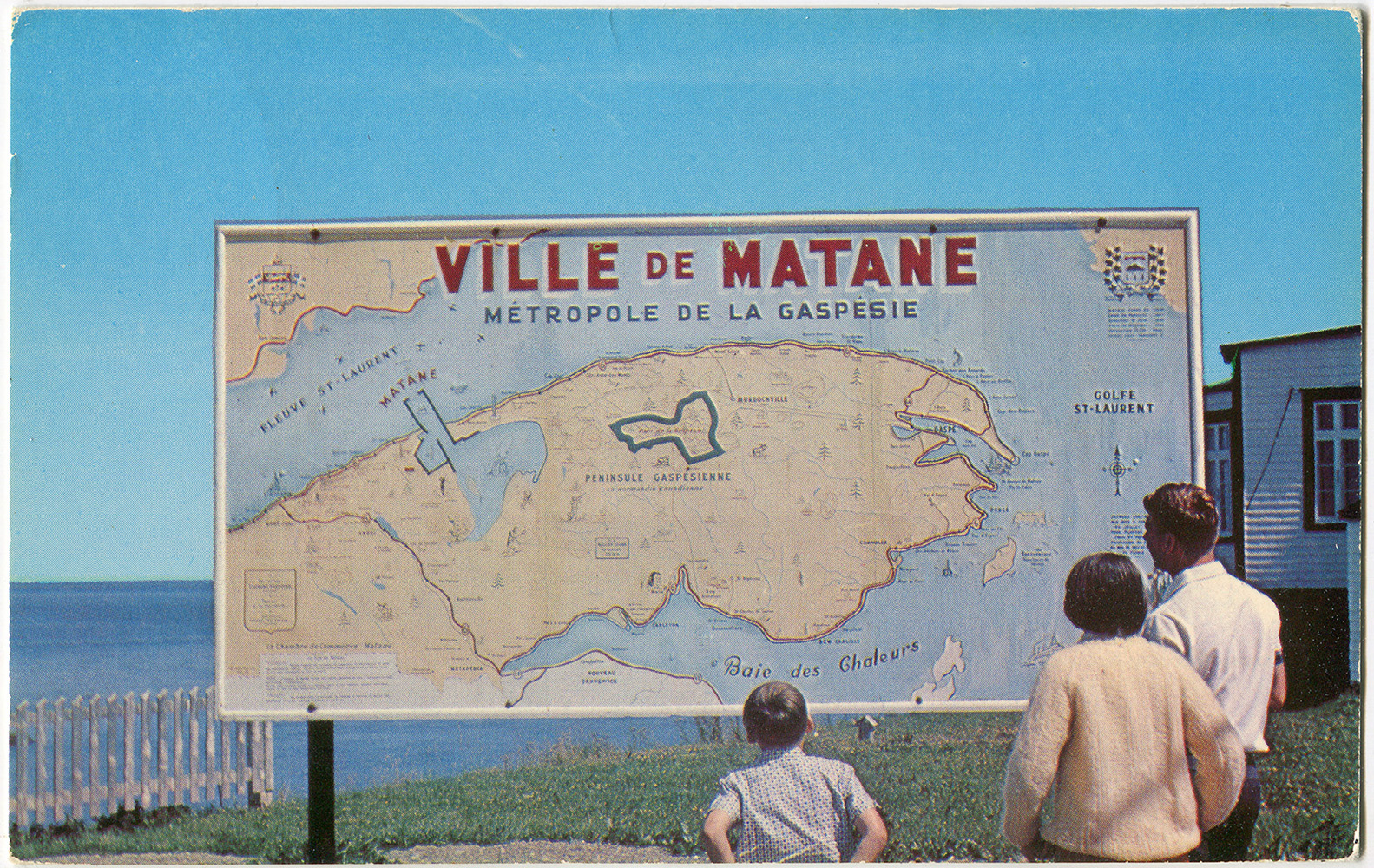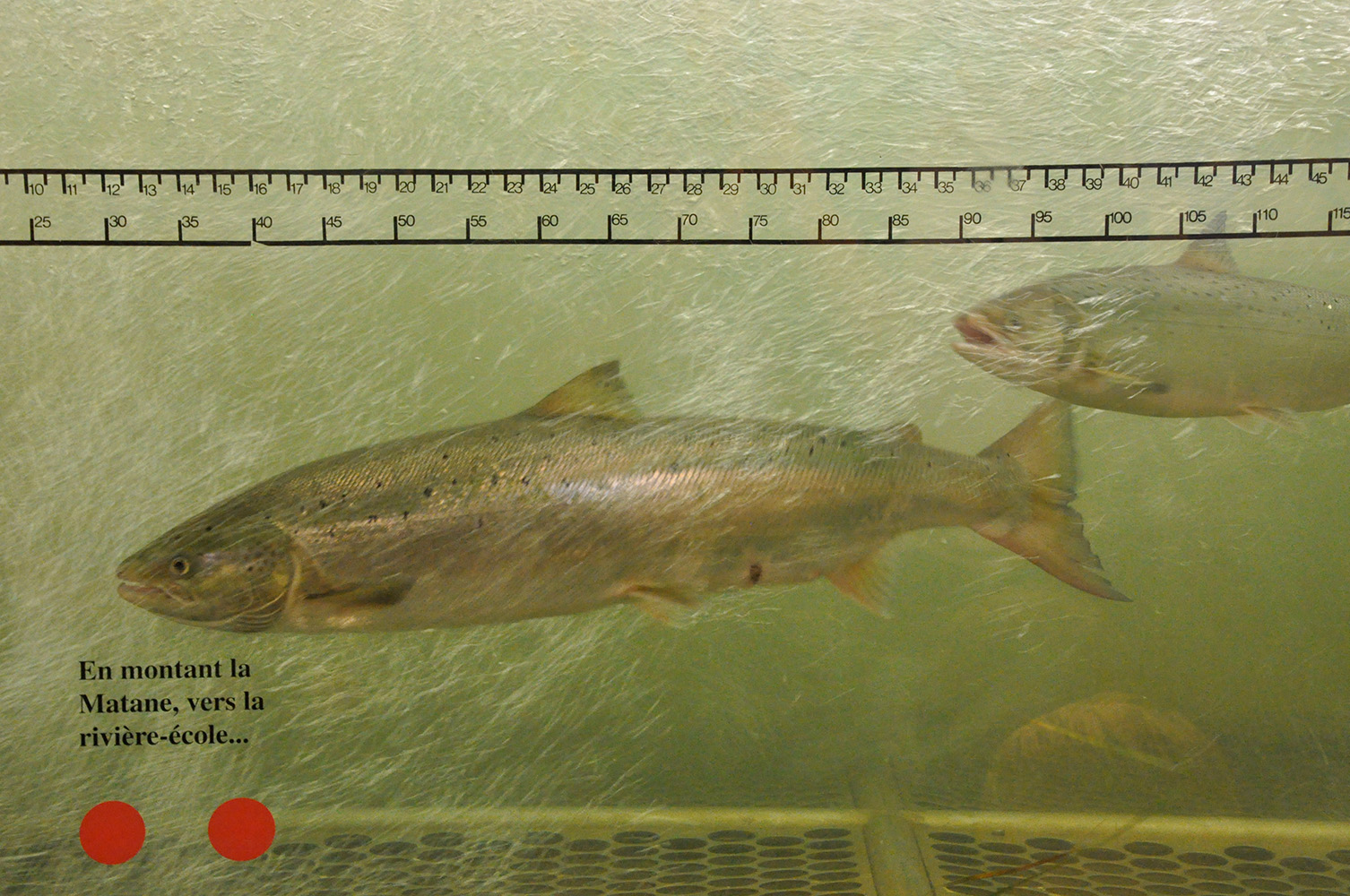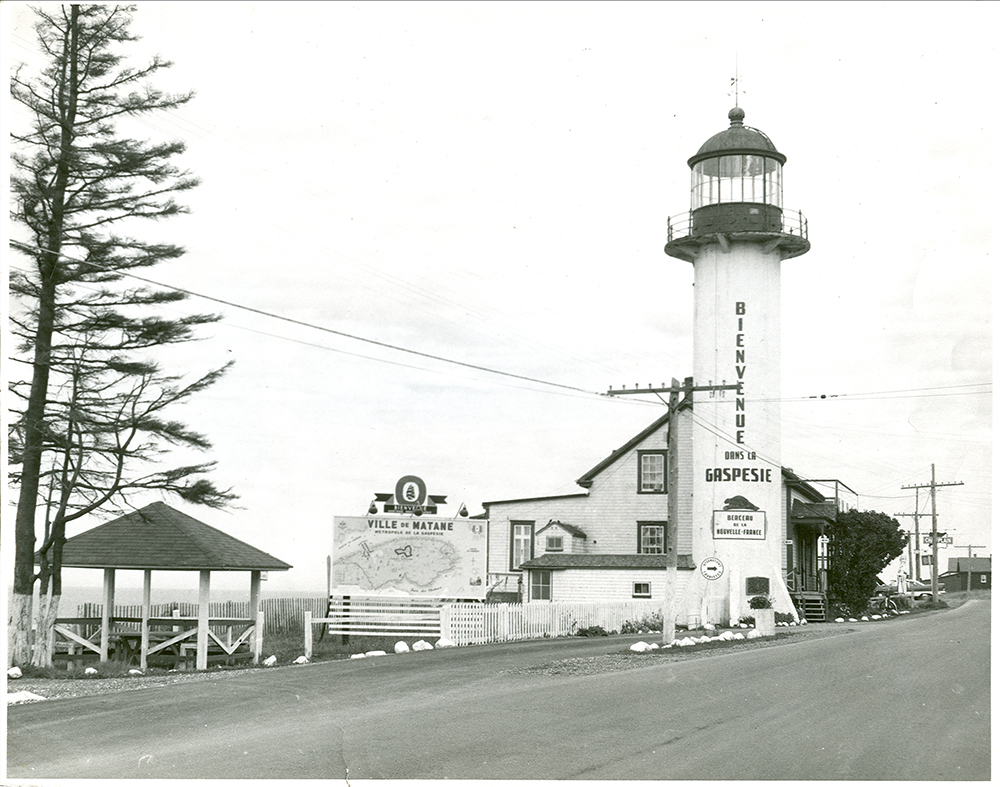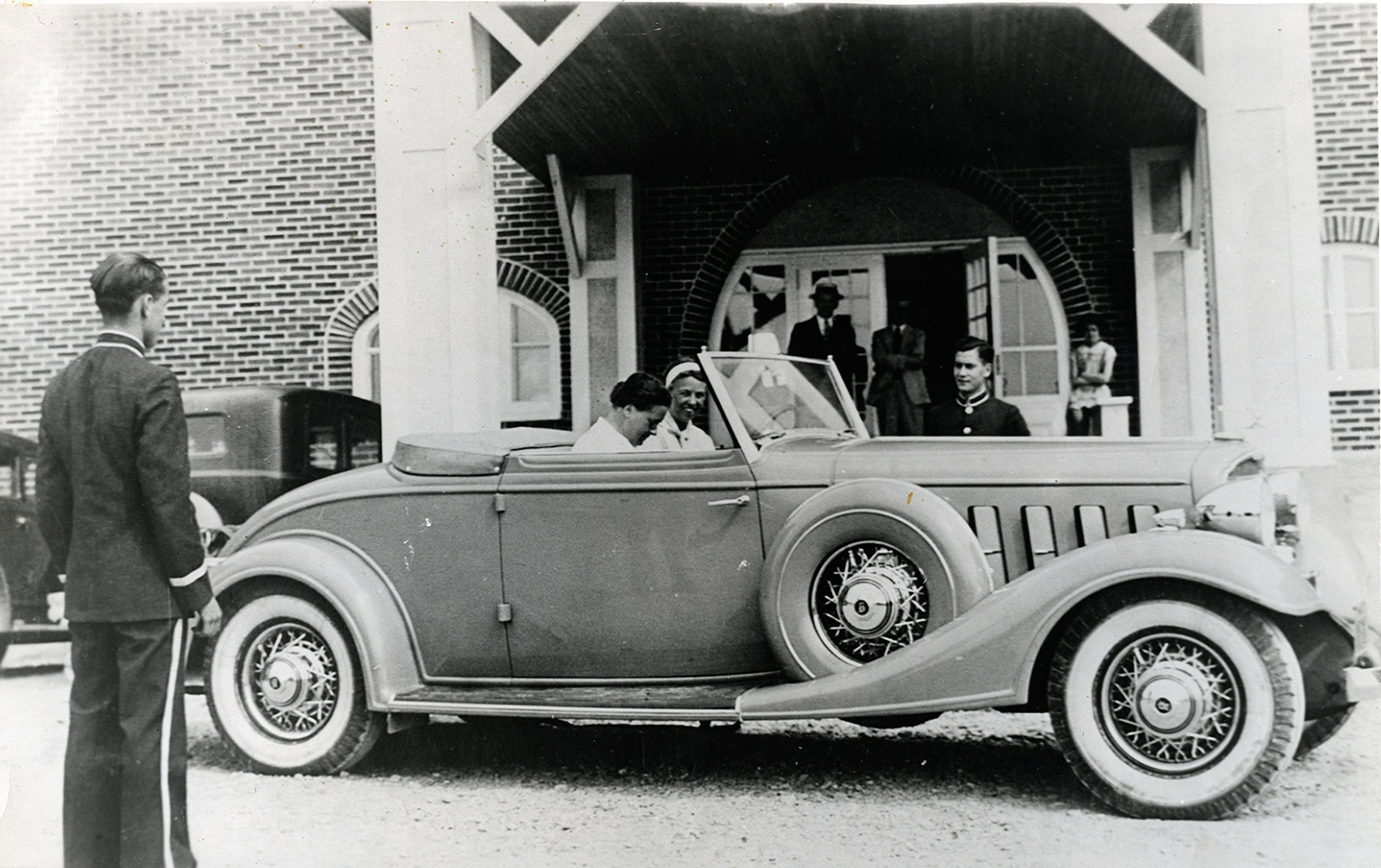Matane
Matane is not a tourism town. It has always been an industrial hub and a community built on serving the hinterland of the northern shore of the Gaspésie. Matane was also a service centre that was an important jumping off point for those travelling east. Because of this, it had more than its share of hotels and service centres. It was also the last place for tourists to obtain tourist information. Its lighthouse was probably the earliest tourism bureau, offering first-time visitors maps and essential information to make their stay a safe and pleasant one.
Having nature at the doorstep however has allowed the city to develop tourism around fishing, hunting and by offering accommodation to the thousands of tourists who drive through or arrive at the ferry terminal from the North Shore.

The city of Matane promoted itself as the region’s metropolis on this roadside billboard that dates from the 1960s.
Nature is also made visible. The fish ladder on the Matane River is one of the only places in the region to see salmon up close. The curious can admire the remarkable journey that brings salmon back every year to the river of their birth to spawn. In the autumn Matane becomes a hunter’s capital, drawn by the greatest density of moose anywhere in the world.

The fish ladder on the Matane River transformed an ecological infrastructure into a tourism attraction, allowing visitors to observe the Atlantic salmon on their return to spawn.
Matane illustrates the great contrasts of the region’s tourism economy, offering seascapes and rivers, hills and hunting to visitors with often very different reasons for visiting.



